#1 Philips 3200
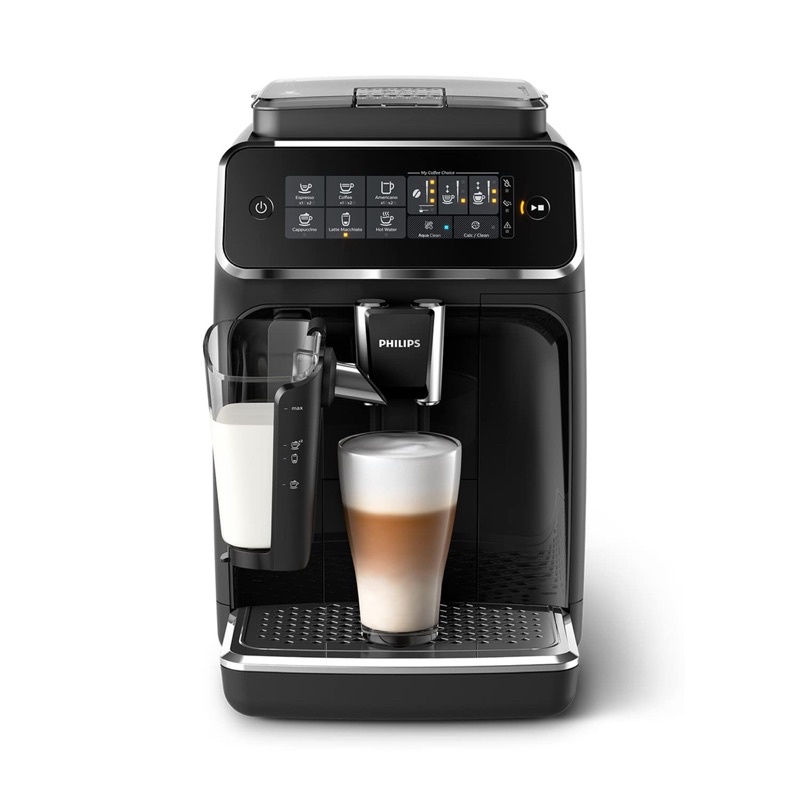
- Easy to use and navigate
- Affordable
- Compact design
#2 Philips 4300
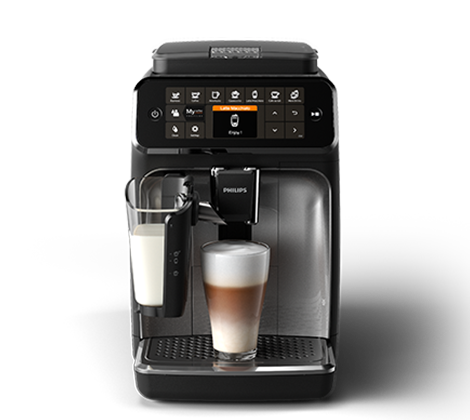
- Wide variety of drinks
- Intuitive touchscreen
- Compact with milk frothe
#3 Philips 5400

- Wide variety of drinks
- Advanced customization
- User profiles
Choosing the right espresso machine can feel like a daunting task, especially when there are so many options available. After trying out the Philips 3200, 4300, and 5400 models extensively, I’m here to share my experience with each and hopefully help you make an informed decision. While all three machines have their strengths, I found the Philips 5400 to be the best overall for its versatility and premium features.
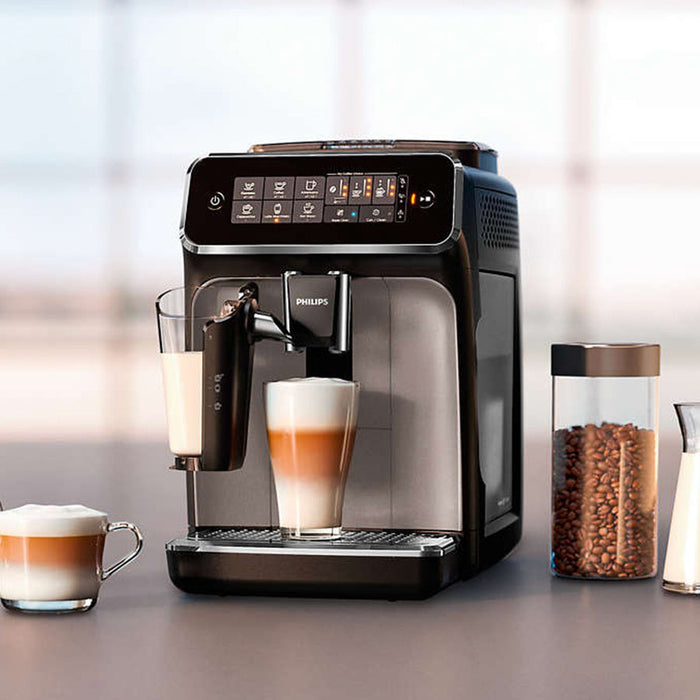
Unboxing and First Impressions of the Philips 3200, 4300, and 5400
When I first unboxed these machines, the differences in presentation and build quality were immediately noticeable.
The Philips 3200 was compact and lightweight, perfect for a smaller kitchen setup. However, the plastic housing gave it a less premium feel. Still, its simple touch display and intuitive controls were a plus.
Moving to the Philips 4300, I noticed an upgrade in the interface. The TFT screen looked sleeker, and the slightly refined build quality was reassuring. It felt like a step up without becoming overwhelming.
Finally, the Philips 5400 stood out with its stainless steel accents and vibrant color touchscreen. This model felt substantial, more robust, and truly designed for coffee enthusiasts who appreciate a premium aesthetic.
The Brewing Experience: Taste and Customization
Coffee taste is subjective, but with these machines, I could experiment with customization to create my perfect cup.
Philips 3200: A Simple Yet Reliable Brewer
The Philips 3200 offers five coffee options, including espresso, Americano, and cappuccino. The simplicity worked well for basic coffee needs, and the three aroma strength settings provided some flexibility. While the coffee was consistently good, I missed the ability to fine-tune beyond basic adjustments.
Philips 4300: A Leap in Flexibility
With the Philips 4300, I enjoyed experimenting with eight coffee varieties. The inclusion of caffé crema and ristretto added some welcome diversity to my morning routine. The five aroma strength levels and temperature settings made it easier to adjust the intensity and flavor, though I sometimes felt the machine struggled to maintain consistency across larger quantities.
Philips 5400: The Coffee Connoisseur’s Dream
The Philips 5400 really stole the show here. Offering 12 coffee options, it felt like having a mini café in my kitchen. I especially enjoyed the flat white and café au lait options, which were unavailable on the other models. The 5400’s customization options were unparalleled, with 12 grinder settings and four user profiles allowing everyone in the household to enjoy their coffee exactly the way they like it.
Exploring the LatteGo System: A Win Across the Board
All three machines feature Philips' innovative LatteGo milk system, which was a delight to use. It’s hands-down one of the easiest milk systems I’ve encountered.
- The Philips 3200 and 4300 provided consistent milk frothing suitable for cappuccinos and lattes. However, I did notice that the texture could feel slightly less refined compared to more advanced machines.
- On the Philips 5400, the froth quality was noticeably better. It was creamier and more consistent, which made a big difference in beverages like flat whites.
Cleaning the LatteGo system was also a breeze—it disassembles into just two parts with no tubes, making it dishwasher-safe or easy to rinse under running water.
User Profiles: A Game-Changer for Families
As someone sharing the machine with multiple coffee drinkers, I really appreciated the user profiles feature on the 4300 and 5400.
- The Philips 4300 allowed two profiles, which was great for saving my espresso preferences alongside my partner’s cappuccino settings.
- The Philips 5400 took this a step further with four profiles. This was especially handy when guests visited, as everyone could personalize their drinks without manually adjusting settings each time.
The Philips 3200, while excellent for solo users, lacked user profiles, which meant more manual adjustments for each brew.
Grinder Performance and Coffee Bean Preservation
Each machine features a durable ceramic grinder with 12 settings, ensuring you get the most out of your coffee beans. I loved the consistency and flavor produced by these grinders. The Philips 5400, however, stood out thanks to its Aroma Seal, which kept beans fresher for longer. This small yet thoughtful feature made a noticeable difference in flavor, especially when brewing multiple cups over several days.
Ease of Cleaning and Maintenance
Maintenance is always a concern with espresso machines, but all three Philips models simplified the process with their removable brew groups and AquaClean filters.
- The Philips 3200 was the easiest to handle for quick cleaning, thanks to its compact design.
- The Philips 4300 and 5400 shared the same convenient cleaning features but offered additional maintenance reminders via their more advanced displays.
The AquaClean filter is a standout feature across all models, reducing the frequency of descaling by filtering the water effectively. This made long-term maintenance far less daunting.
Energy Efficiency and Noise Levels
I noticed a slight difference in energy consumption and noise levels across the models:
The Philips 3200 was the quietest of the three, making it ideal for early mornings when I didn’t want to wake the household.
The Philips 4300 and 5400 were slightly louder but still acceptable for daily use. The noise primarily came from the grinder, which, considering its efficiency, was a fair trade-off.
In terms of energy-saving features, all three machines offered standby modes to minimize power consumption when not in use.
Who Should Choose Each Model?
After weeks of testing, here’s who I think would benefit most from each machine:
Philips 3200: Perfect for beginners or those seeking a straightforward machine without too many bells and whistles. It’s reliable, easy to use, and offers great value for money.
Philips 4300: A great choice for households with two coffee drinkers or those who want more variety without splurging on high-end features. The user profiles and additional coffee options make it a worthwhile upgrade.
Philips 5400: The ultimate pick for coffee aficionados or larger households. If you value extensive customization, premium design, and maximum variety, this is the machine for you.
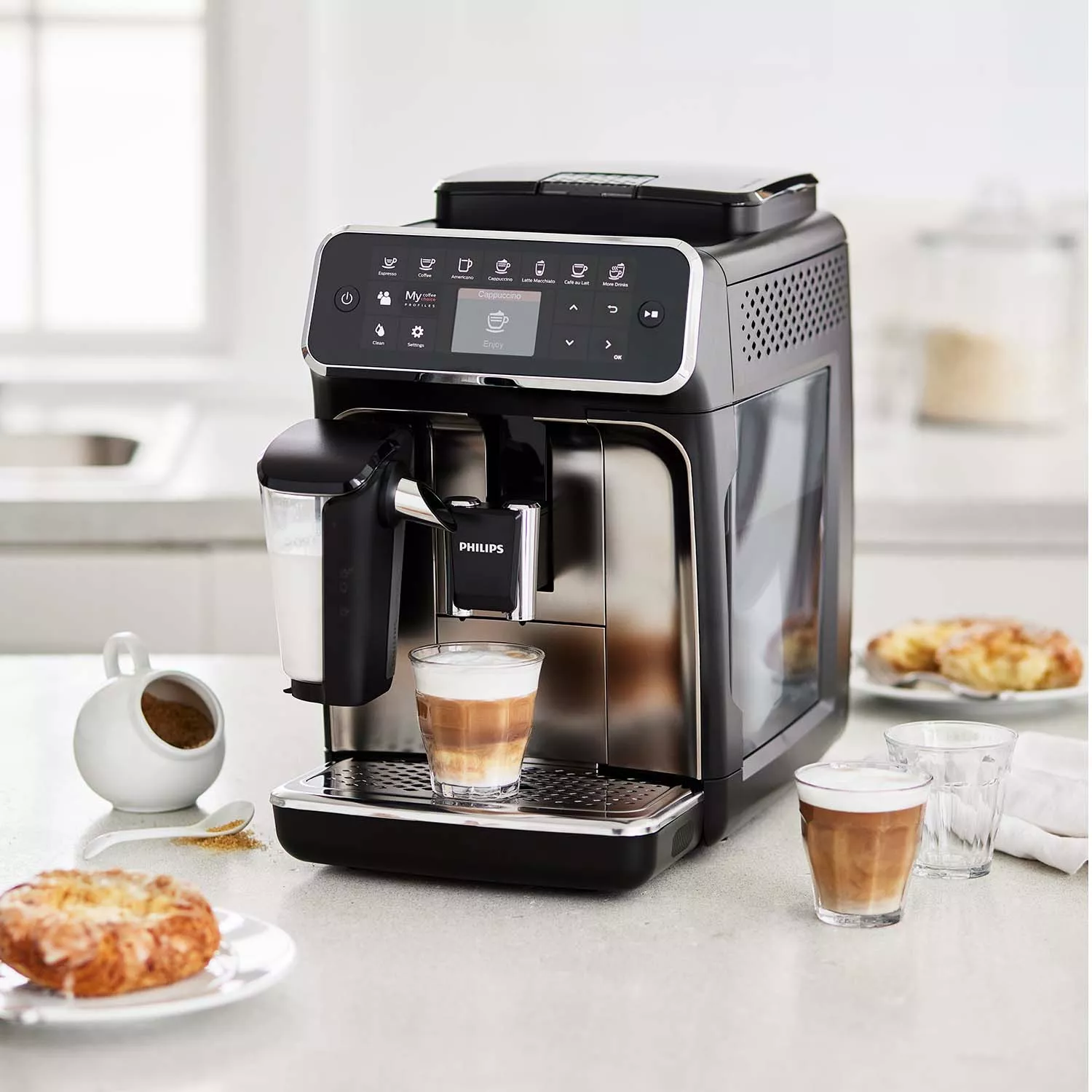
Product Review Conclusion: Philips 3200 vs 4300 vs 5400
Having used all three machines, I can confidently say that the Philips 5400 offers the most well-rounded experience. While the Philips 3200 is a fantastic entry-level option and the Philips 4300 strikes a good balance between affordability and features, the Philips 5400 shines with its versatility, design, and user-friendly features.
If you’re serious about coffee and want a machine that can cater to every preference, the Philips 5400 is well worth the investment. However, if you’re on a budget or don’t need all the bells and whistles, the other two models still provide an excellent brewing experience. Ultimately, your choice will depend on your priorities—but I hope this breakdown helps you find the perfect fit for your coffee journey.
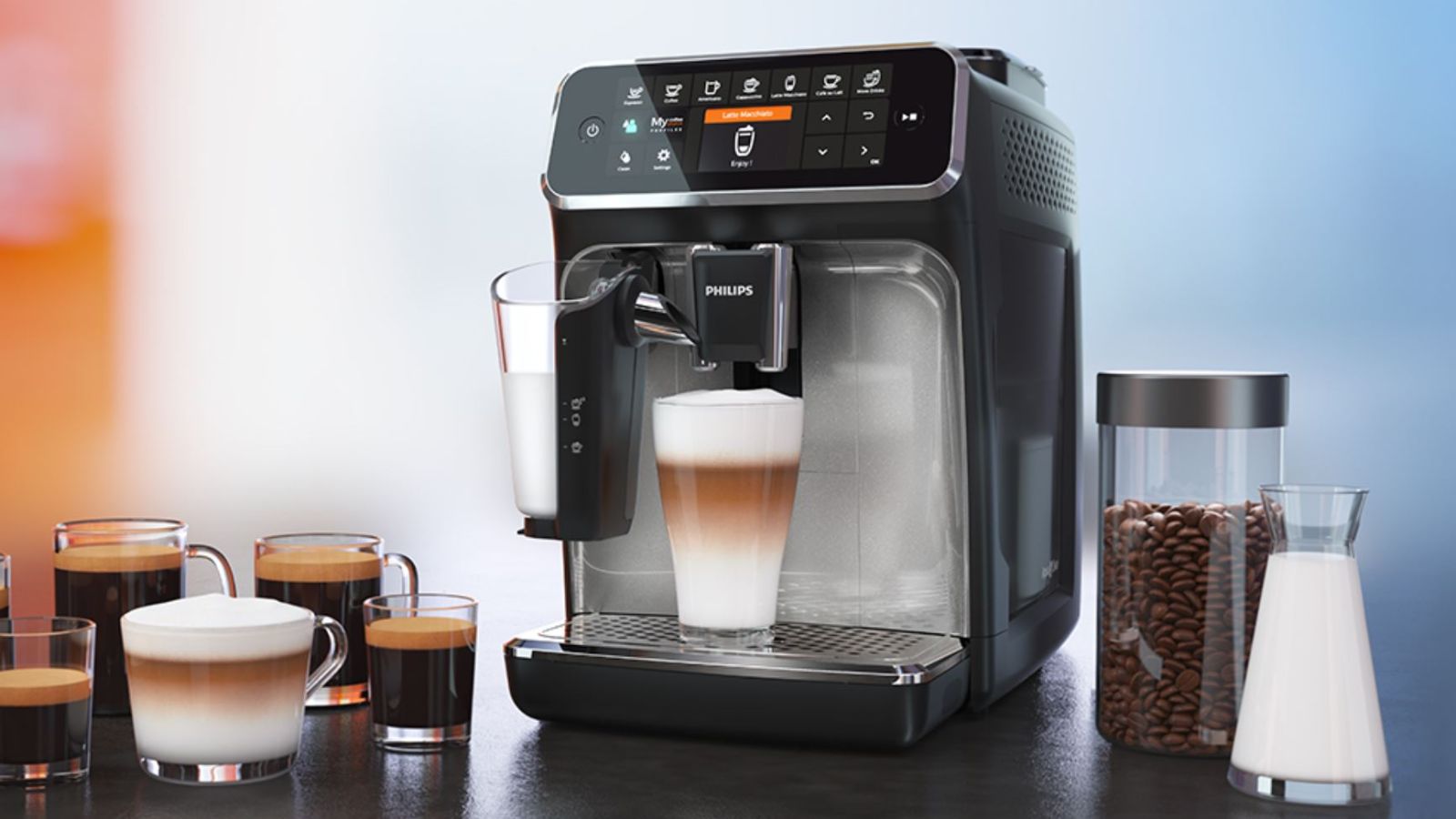
FAQs
1. What is the difference in the number of coffee varieties among the Philips 3200, 4300, and 5400?
- Answer: The Philips 3200 offers five coffee varieties, including espresso and cappuccino. The Philips 4300 increases this to eight varieties, adding options like caffé crema. The Philips 5400 stands out with twelve coffee varieties, including flat white and café au lait.
2. How easy is it to clean the LatteGo milk system?
- Answer: The LatteGo milk system is very easy to clean across all three models. It consists of only two parts that can be rinsed under running water or placed in the dishwasher. This design eliminates the need for complicated tubing, making maintenance straightforward.
3. Can I customize my coffee settings on these machines?
- Answer: Yes, all three models allow for some degree of customization. The Philips 3200 offers three aroma strength settings, while the 4300 allows for five settings and temperature adjustments. The Philips 5400 provides the most options, with five aroma strengths, twelve grinder settings, and three temperature choices.
4. Do these machines have user profiles for personalized settings?
- Answer: The Philips 3200 does not have user profiles, meaning settings must be adjusted manually each time. The Philips 4300 supports two user profiles, while the Philips 5400 offers four profiles, allowing multiple users to save their personalized coffee settings for quick access.
5. How do the grinders perform in each model?
- Answer: All three machines feature durable ceramic grinders with twelve settings for adjusting grind size. However, the Philips 5400 includes an Aroma Seal feature that helps keep coffee beans fresher, enhancing the overall flavor of the brew.
6. Are these machines energy-efficient?
- Answer: Yes, all models have energy-saving features, including standby modes that reduce power consumption when not in use. This helps minimize energy costs over time.
7. How loud are the machines during operation?
- Answer: The Philips 3200 is the quietest of the three, making it suitable for early mornings. The Philips 4300 and 5400 are slightly louder, mainly due to the grinder, but are still considered acceptable for daily use.
8. What kind of maintenance do these machines require?
- Answer: Maintenance is minimal thanks to features like the removable brew group and AquaClean filters, which reduce the need for frequent descaling. Regular cleaning of the milk system and the brew group is recommended to keep the machines functioning optimally.
9. Which model is best for a beginner?
- Answer: The Philips 3200 is ideal for beginners due to its straightforward design and user-friendly interface. It provides essential coffee-making capabilities without overwhelming complexity.
10. Can I make milk-based beverages with these machines?
- Answer: Yes, all three models can make milk-based beverages, thanks to the LatteGo milk system. The quality of the milk froth varies slightly, with the Philips 5400 providing the best texture for lattes and cappuccinos.
